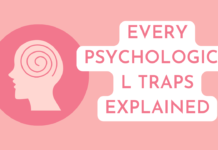The passage below is accompanied by a set of questions. Choose the best answer to each question.
We cannot travel outside our neighbourhood without passports. We must wear the same plain clothes. We must exchange our houses every ten years. We cannot avoid labour. We all go to bed at the same time . . . We have religious freedom, but we cannot deny that the soul dies with the body, since ‘but for the fear of punishment, they would have nothing but contempt for the laws and customs of society’. . . . In More’s time, for much of the population, given the plenty and security on offer, such restraints would not have seemed overly unreasonable. For modern readers, however, Utopia appears to rely upon relentless transparency, the repression of variety, and the curtailment of privacy. Utopia provides security: but at what price? In both its external and internal relations, indeed, it seems perilously dystopian.
Such a conclusion might be fortified by examining selectively the tradition which follows More on these points. This often portrays societies where . . . ‘it would be almost impossible for man to be depraved, or wicked’. . . . This is achieved both through institutions and mores, which underpin the common life. . . . The passions are regulated and inequalities of wealth and distinction are minimized. Needs, vanity, and emulation are restrained, often by prizing equality and holding riches in contempt. The desire for public power is curbed. Marriage and sexual intercourse are often controlled: in Tommaso Campanella’s The City of the Sun (1623), the first great literary utopia after More’s, relations are forbidden to men before the age of twenty-one and women before nineteen. Communal child-rearing is normal; for Campanella this commences at age two. Greater simplicity of life, ‘living according to nature’, is often a result: the desire for simplicity and purity are closely related. People become more alike in appearance, opinion, and outlook than they often have been. Unity, order, and homogeneity thus prevail at the cost of individuality and diversity. This model, as J. C. Davis demonstrates, dominated early modern utopianism. . . . And utopian homogeneity remains a familiar theme well into the twentieth century.
Given these considerations, it is not unreasonable to take as our starting point here the hypothesis that utopia and dystopia evidently share more in common than is often supposed. Indeed, they might be twins, the progeny of the same parents. Insofar as this proves to be the case, my linkage of both here will be uncomfortably close for some readers. Yet we should not mistake this argument for the assertion that all utopias are, or tend to produce, dystopias. Those who defend this proposition will find that their association here is not nearly close enough. For we have only to acknowledge the existence of thousands of successful intentional communities in which a cooperative ethos predominates and where harmony without coercion is the rule to set aside such an assertion. Here the individual’s submersion in the group is consensual (though this concept is not unproblematic). It results not in enslavement but voluntary submission to group norms. Harmony is achieved without . . . harming others.











